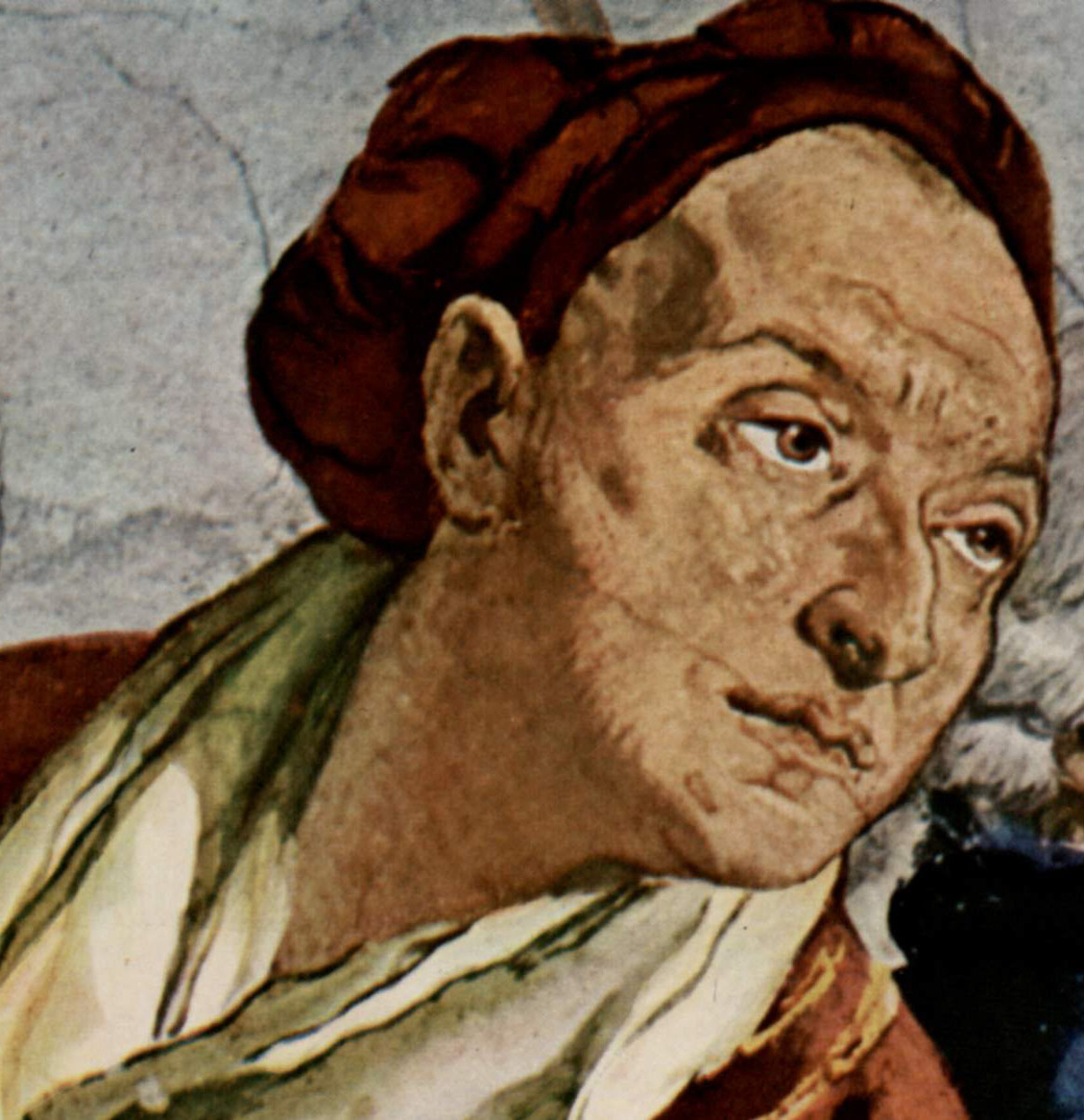Giovanni Battista Tiepolo (1696-1770) was an Italian Rococo painter known for his prolific paintings, etchings and frescoes. Born in Venice, Tiepolo began as a pupil of Gregorio Lazzarini but left his tutelage in 1717 when he was received into the Fraglia, or Guild of Painters. He was mostly influenced by Tintoretto and Veronese but developed his own notable style.
He specialized in large wall and ceiling frescoes with dramatic narratives. His first masterpieces in Venice consisted of ten enormous canvases depicting historical battle scenes from the history of Ancient Rome; these were used to decorate the large reception room of Ca’ Dolfin on the Grand Canal.
Madonna of the Goldfinch is a religious painting that shows Mary holding a cherub-like, ginger haired baby Jesus. The viewer is immediately struck by the glowing, creamy beauty of Mary; we see her face lit from above and framed by the shadows of her veil. Tiepolo used high-keyed, muted colors possibly reflecting the trends for pastels at the time. We see the baby tugging on Mary’s veil as if pulling himself closer to his mother but at the same time looking away to the viewer with an expression of depth and maturity unusual for a child of his age. Jesus holds out a goldfinch in his hand. According to legend the goldfinch acquired the red spot on his head when it removed a thorn from Christ’s head during his climb to Calvary, and was splashed with a drop of blood. The goldfinch he holds symbolizes the cross he will later bear and foreshadows what will be his slow and painful death.
In 1761 Tiepolo was commissioned by King Charles III to create a ceiling fresco for the throne room in the Royal Palace of Madrid. In 1770 Tiepolo died in Madrid leaving behind a prolific amount of works including 800 paintings, numerous etchings and masterful frescoes that still remain in churches and buildings across Europe.
Heidi Donovan Werber


 Giovanni Battista Tiepolo
Giovanni Battista Tiepolo